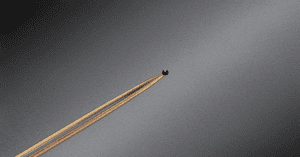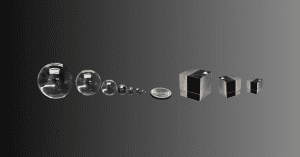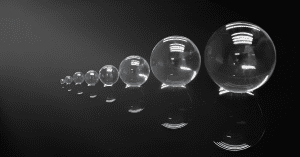Microspheres
Microspheres offer a practical solution for channeling light into or out of optical fibers and transmitting images within confined spaces. These spherical particles, available in a broad size range, provide near-perfect coupling due to the exceptionally close proximity of their focal point to the sphere’s surface, enabling seamless connection with optical fibers or other microspheres.

In terms of coatings, three distinct options are available. All coatings consist of a single layer of MgF₂, optimized for either the visible spectrum or one of the two diode laser bands. For coated microspheres, alignment along the coating axis is essential during use. To assist with this, a removable black dot is provided for easy identification of the axis.
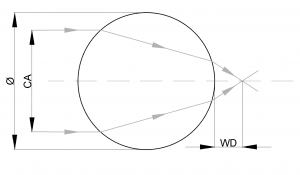
Applications
Microspheres find applications in various fields due to their unique optical properties and versatility. Here are a few examples of their usage:
- Biomedical Imaging and Drug Delivery: Microspheres serve as contrast agents in imaging techniques like ultrasound, magnetic resonance imaging (MRI), and computed tomography (CT) scans. They can also be loaded with drugs for targeted drug delivery to specific cells or tissues within the body.
- Fiber Optics and Telecommunications: Microspheres enable efficient light coupling into and out of optical fibers. They are also used in optical switches and modulators, enhancing telecommunications performance.
- Microsphere-based Sensors: Microspheres act as sensors for various physical and chemical parameters, utilized in environmental monitoring (e.g., detecting pollutants in water), biosensing (e.g., detecting biomolecules like DNA or proteins), and gas sensing (e.g., detecting specific gases in industrial settings).
These are just a few examples; microspheres are also valuable in materials science, photonics, and cosmetics (for their light-scattering properties in makeup products). Their versatility makes them integral to a range of technological and scientific applications.
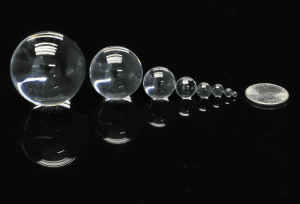
Factory Standard
Material | LaSF N9, grade A, fine annealed optical glass |
Wavelength | 450–2300 nm, uncoated |
Refractive Index | n830 = 1.83098, n1300 = 1.81764, n1550 = 1.81329 |
Diameter Tolerance | ±1 µm |
Spherical Tolerance | ≤ λ/4 at 587.6 nm |
Antireflection Coating | Single-layer MgF2, R ≤0.25% at the coating design wavelength |
Avantier Inc. offers microspheres as custom optical components tailored to diverse needs. Please contact us to schedule a consultation or request a quote for your next project.
WE CAN HELP YOU!
Contact us NOW for sales & expert advice.



